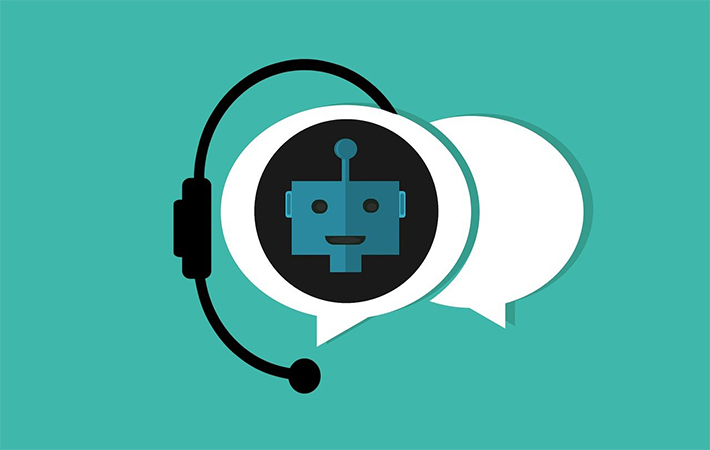How to Select a Chatbot for Your Website/App
Ever been visiting a website when a little customer service window pops up and asks you if you need help?
Then, you’re already familiar with a “Chatbot.” These software assistants play a crucial role for businesses who wish to communicate with their customers and are becoming more and more ubiquitous in our lives while becoming more refined.
A chatbot is an automated conversation system that can communicate with a visitor in a conversational tone while responding to questions and resolving customer issues.
Chatbots are intuitive site valets, on-duty 24/7, that engage with the customer online and ask them pre-programmed questions designed to lead the end user to the right person or area.
They can be installed on a website or an app and are a useful tool for answering routine questions for common customer issues, saving the company time and money.
They are not a replacement for customer service; they are an augmentation of it. Their job is to determine the intent of the visitor, so bots are programmed with the right questions to ask which then narrow down the possibilities for finding the solution.
Chatbots free up personnel time and connect visitors with employees ONLY when they cannot resolve the issue or require a more nuanced response.
Chatbot questions are developed by the business owner to ask custom questions along with rules that decide when to ask which question.
It is vital that customer interaction is smooth and seamless, so the person engaging with the bot is confident that their issues will be resolved or will move them correctly to the next step in the journey.
When questions asked and answered by the bot escalate the customer experience, users are more inclined users to use it.
Chatbots are used primarily in two places:
- Customer Service
When customers repeatedly ask the same questions of a company, a chatbot is a perfect solution. Especially because the alternative — 24-hour human resources who answer the same question over and over again — is costly!When repetition like this occurs, it becomes clear to the company what algorithm to write into their “site valet” and how to narrow down subsequent choices. This not only saves the company time and money, but better serves their clients with immediate responses.
- Lead Generation — Chatbots can convert visitors into clients! After answering routine questions about certain product features, services and plans, the chatbot can actually qualify a lead and connect the visitor to a sales person for further discussion.
Since they are on-duty 24/7, no leads are ever lost due to service hours or absent staff. As attention spans in general decrease, capturing a lead when a purchase is about to be made increases ROI for chatbots.Before investing in chatbots, you’ll need to determine these things first:
-
What is the problem you are trying to solve?
Knowing this will elucidate your needs and help decide how to evaluate a chatbot’s effectiveness.
- Why do you want or need a chatbot on your website?
- Are there standard questions that all visitors have?
- Is it to create a better support system for your products?
- Do you want to prequalify leads as they move through the chatbot sales funnel?
- Will other departments also use this Chatbot at a later stage?
-
Create an outline of a typical conversation the chatbot will have.
Chatbots ask visitors questions about their needs. For example, are they looking for a product or service? Do they need customer service for a product or service they purchased? Do they want to report an issue?
Spell out a typical conversation that potential buyers/clients currently ask your sales and support team. This is the basis for programming your chatbot.
-
Assign a person to be responsible for the chatbot.
Like any software, chatbots need time to be evaluated, tested, built and maintained. This is best accomplished by assigning a person / division / company to take on this responsibility. This party can then look for ways that the selected chatbot can be integrated with other software used within your company. For example, a chatbot that handles lead generation might also be a natural for customer service enhancement.
-
Choose a chatbot that comes with a trial period.
The only true way to know if a product is for you is by taking it for a test drive. If the software you buy does not allow a trial period, you may end up stuck paying for something you don’t want. Some chatbots may not be compatible with your system.
After programming the chatbot, install it on a test site and have test users take it for a trial run. Be ready to immediately program a chatbot before your trial period so you get maximum trial time.
-
Make sure the chatbot works on other devices as well.
Mobile use is exploding! It is uber important that the chatbot you select works on mobile/tablets. Be sure to test it on each device.
-
Select a chatbot that serves special requirements that your domain may have.
For instance, if your field is a highly regulated domain, you’ll want to decide what kind of chatbot deployment will meet your industry’s security requirements. Most chatbots are cloud-based services. If your company needs an online solution, use that as one of the criteria when selecting a chatbot.
Chatbots really can act as a perfect complement to your customer-facing department. They do not replace personnel, but serve to make your team more present and efficient.
If you need any help selecting a chatbot for your company, feel free to reach out to us at (650) 346-1442.
-

